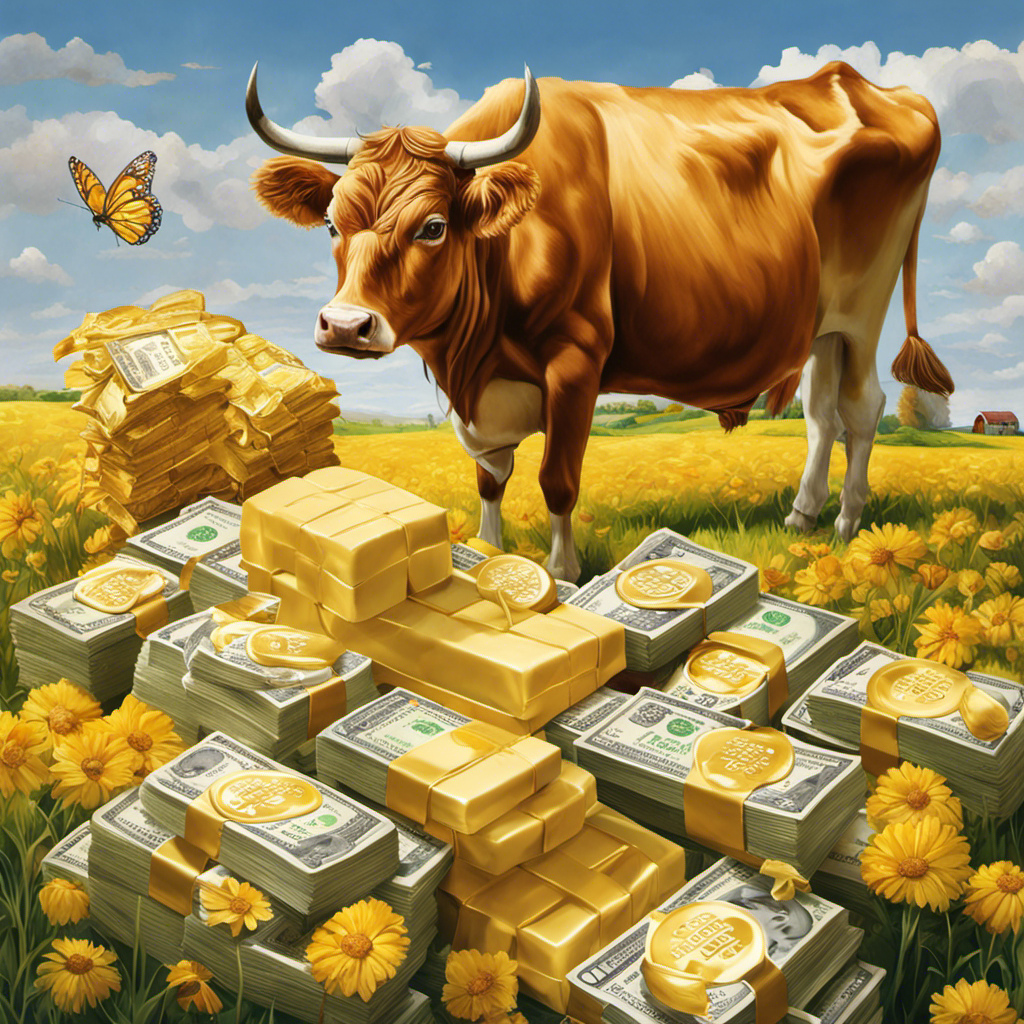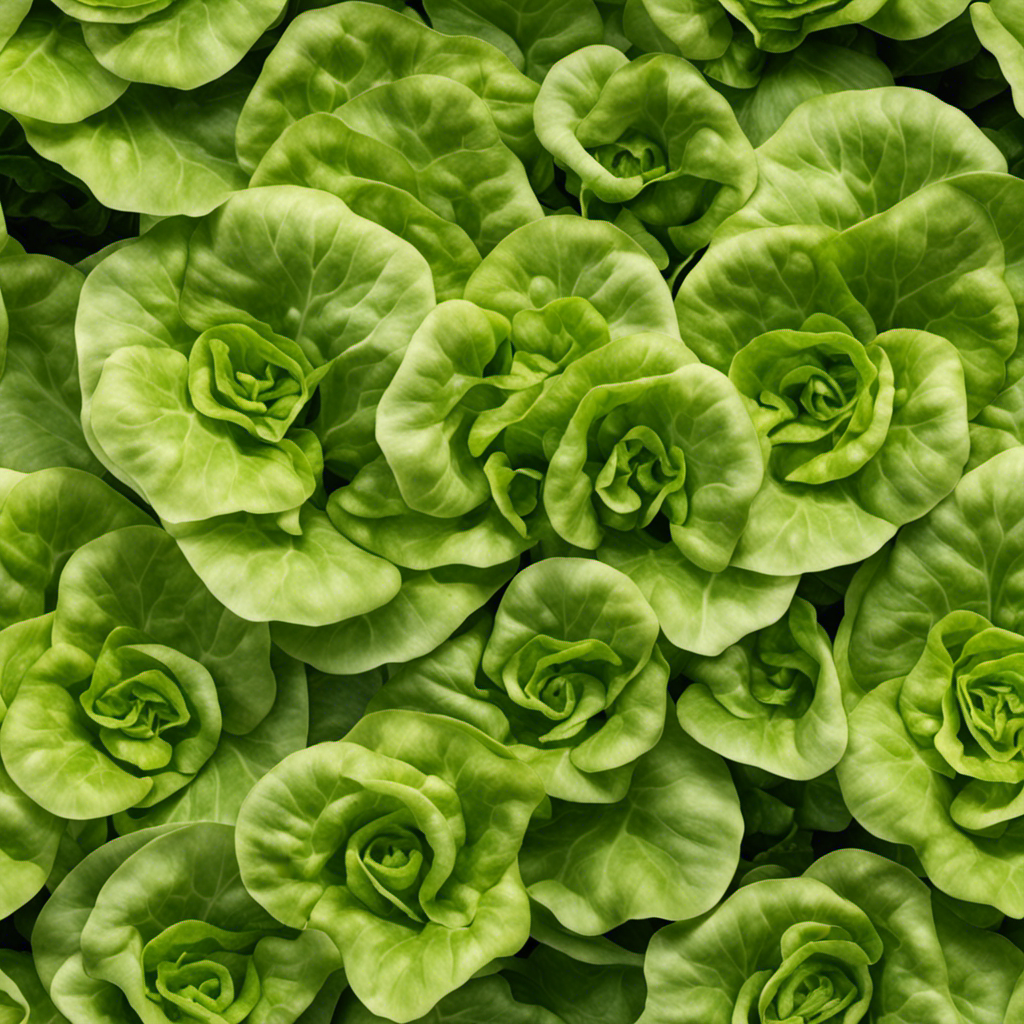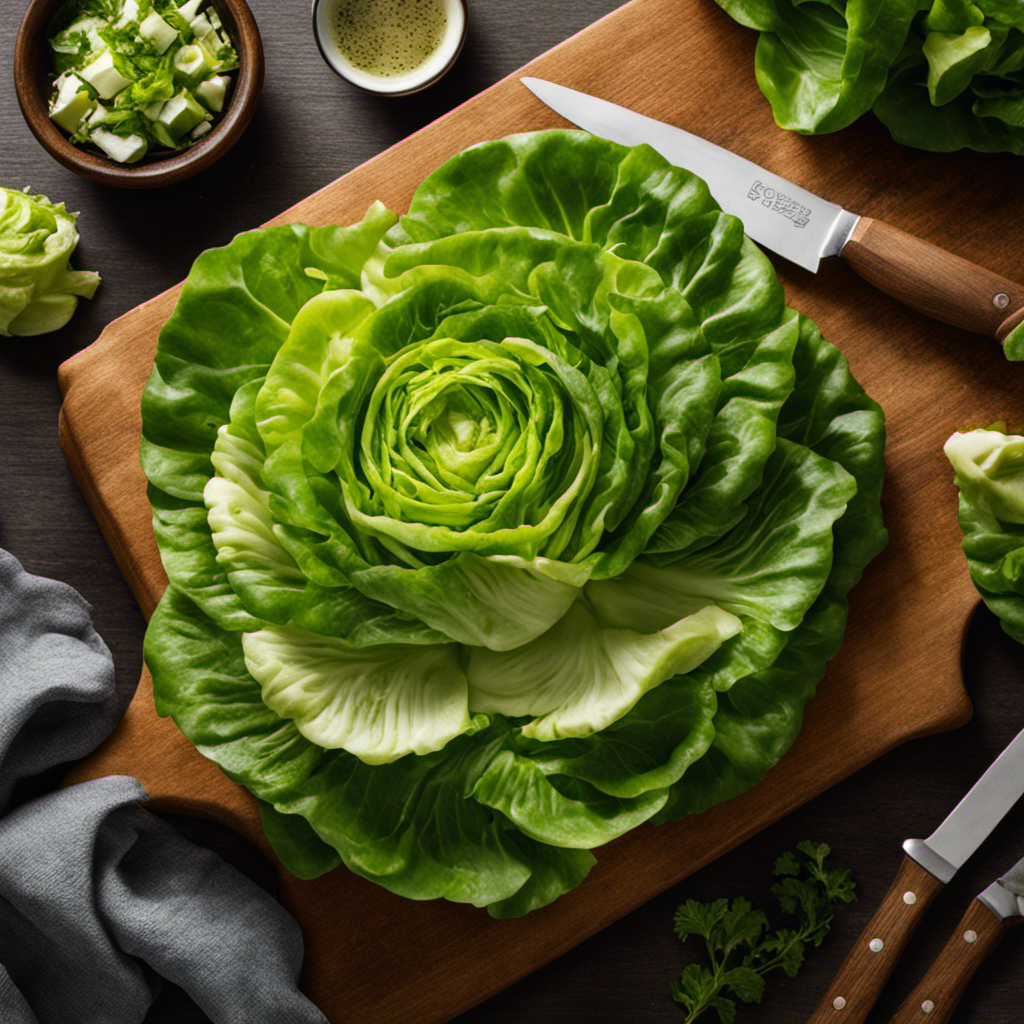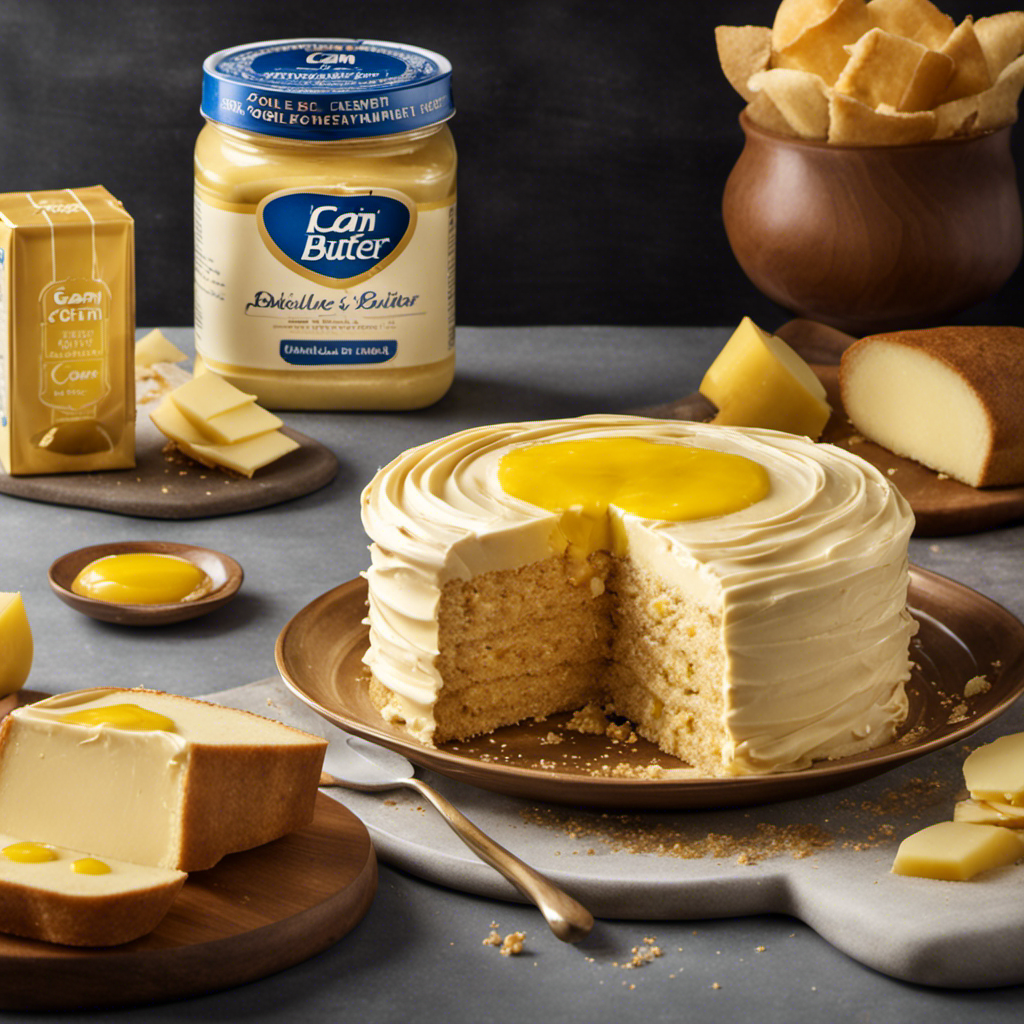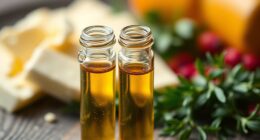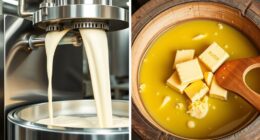As I contemplate my breakfast options, I can’t help but wonder why the cost of butter has increased so drastically in 2017.
In this article, we will delve into the economic factors behind the rising prices of this beloved dairy product. By examining the interplay of supply and demand, the impact of regulations on the dairy industry, and the influence of global trends, we hope to shed light on the complex forces driving up the cost of butter.
Key Takeaways
- Economic inequality and consumer behavior contribute to rising butter prices.
- Fluctuations in milk supply directly impact butter production.
- Dairy industry regulations affect the cost of butter production.
- Butter alternatives offer a more affordable option for reducing expenses.
The Economic Factors Behind Rising Butter Prices
I can’t believe how much butter prices have skyrocketed this year due to economic factors.
It’s clear that economic inequality and consumer behavior have played a significant role in the rising costs of butter.
Economic inequality, with the rich getting richer and the poor struggling to make ends meet, has led to a shift in consumer behavior. As income disparities have widened, consumers have become more price-sensitive, opting for cheaper alternatives to butter. This increased demand for lower-priced substitutes has put pressure on the supply of butter, driving up prices.
Furthermore, factors such as increased production costs and global supply chain disruptions have also contributed to the price hike.
Understanding the butter market requires examining the dynamics of supply and demand, which I’ll explore in the subsequent section.
Supply and Demand: Understanding the Butter Market
Lately, I’ve noticed that the price of butter has been rising due to a high demand and limited supply. The challenges in butter production have contributed to this situation.
One of the main challenges is the fluctuation in milk supply. Butter is made from cream, which is extracted from milk. The availability of milk directly affects butter production. Additionally, there have been concerns regarding the quality of milk, which can impact the taste and texture of butter.
To address these challenges, dairy farmers are implementing various solutions such as improving breeding techniques, optimizing feed and nutrition, and investing in advanced technology.
Furthermore, consumer preferences also play a significant role in the butter market. The recent shift towards natural and organic products has increased the demand for butter made from grass-fed cows, which further limits the supply and drives up prices.
Overall, a combination of production challenges and evolving consumer preferences are impacting the butter market.
Exploring the Impact of Dairy Industry Regulations on Butter Prices
To understand the impact of dairy industry regulations on butter prices, it’s important to examine the various factors that contribute to the cost of production.
In recent years, dairy industry regulations have had a significant impact on butter pricing. These regulations include policies related to milk production, milk pricing, and product labeling.
Milk production quotas and supply management systems can limit the availability of milk, which in turn affects the production of butter. Additionally, pricing regulations can affect the cost of raw materials, such as milk and cream, which are essential for butter production.
Lastly, product labeling regulations can require additional costs for producers to meet certain standards, which can ultimately impact the final price of butter.
Therefore, it’s evident that dairy industry regulations play a crucial role in determining butter prices.
Butter Alternatives: Are They a Cost-effective Solution
Butter alternatives can provide a more affordable option for those looking to reduce their expenses. When comparing the nutritional benefits of butter alternatives, it’s important to consider factors such as fat content, cholesterol levels, and vitamin content.
Many alternative spreads are made from plant-based oils, such as olive oil or avocado oil, which can be lower in saturated fat and cholesterol compared to butter. Additionally, some spreads are fortified with vitamins and minerals, offering an added nutritional benefit.
Consumer preferences play a significant role in choosing between butter and alternative spreads. While butter has long been a staple in many cuisines, more people are now opting for healthier options. The availability of different flavors and textures in alternative spreads also appeals to consumer preferences.
Ultimately, the choice between butter and alternative spreads comes down to personal taste and dietary needs.
The Influence of Global Trends on Butter Pricing
As a consumer, I have noticed that global trends have a significant impact on the pricing of butter alternatives. The increase in global butter consumption and the rise in butter production costs are two key factors that contribute to the expensive nature of butter substitutes. According to data, global butter consumption has been steadily increasing over the past few years, leading to a higher demand for butter and its alternatives. This increased demand puts pressure on manufacturers to produce more butter alternatives, which in turn drives up production costs. Additionally, the rising costs of ingredients, such as plant-based oils and nuts, which are commonly used in butter alternatives, further contribute to the higher prices.
To better understand the influence of global trends on butter pricing, let’s take a look at the following table:
| Global Butter Consumption | Butter Production Costs |
|---|---|
| Increasing trend | Rising steadily |
| Higher demand | Pressure on manufacturers |
| Rising costs of ingredients | Contributing factor to higher prices |
Frequently Asked Questions
How Does the Taste of Butter Compare to Butter Alternatives?
When comparing the taste of butter to butter substitutes, it’s important to consider market trends.
Butter alternatives have gained popularity in recent years due to various factors such as health concerns and dietary restrictions.
However, when it comes to taste, many people still prefer the rich and creamy flavor of real butter.
The unique taste of butter is difficult to replicate, making it a staple ingredient in many recipes.
What Are the Health Benefits of Consuming Butter?
Butter, oh butter, how I adore your creamy richness! When it comes to health benefits, butter isn’t just a delicious treat, but also a source of valuable nutrients.
With its high nutritional value, butter provides essential vitamins like A, D, and E, as well as healthy fats and cholesterol. These components support brain function, promote hormone production, and aid in the absorption of fat-soluble vitamins.
Are There Any Environmental Concerns Associated With the Production of Butter?
When considering the environmental impact of butter production, sustainability is an important concern.
The production process involves the use of large amounts of land, water, and energy, which can have negative consequences for the environment.
Additionally, the dairy industry is a significant contributor to greenhouse gas emissions, primarily through methane released by cows.
To mitigate these concerns, efforts are being made to improve efficiency, reduce waste, and explore alternative methods of production.
What Are the Different Types of Butter Available in the Market?
When it comes to the types of butter available in the market, there are several options to choose from.
Traditional butter made from cow’s milk is the most common and widely used.
However, there are also alternatives such as margarine and plant-based spreads which are made from vegetable oils.
These alternatives often have a slightly different taste compared to traditional butter.
It’s important to consider personal preferences and dietary restrictions when selecting a butter option.
How Does the Price of Butter Vary Across Different Countries?
Price variations in butter across different countries can be influenced by a variety of factors.
Cultural preferences play a significant role in determining the demand and supply of butter in each country, which in turn affects its price.
Additionally, factors such as production costs, import/export tariffs, and government regulations can also contribute to price differences.
Analyzing data on these factors can provide insights into why butter may be more expensive in certain countries compared to others.
Conclusion
In conclusion, the rising cost of butter in 2017 can be attributed to a combination of supply and demand factors, dairy industry regulations, and global trends.
As the demand for butter continues to increase, and regulations on dairy production tighten, the price of butter will likely remain high.
However, exploring cost-effective alternatives to butter could help mitigate the impact of these rising prices.
The butter market is a delicate balance, constantly influenced by various economic forces, much like a tightrope walker navigating their way across a high wire.
